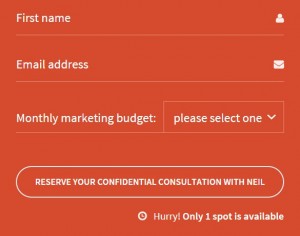
Do you simply tally up your wins and losses, then look to see whether the trends are going in the right direction? If so, you’re like many other companies. Some will go a little further and ask the sales reps why the sale was lost. Most likely they’ll tell you it was the price or some other failing of your offering.
Those companies, however, that take a systematic approach to win/loss analyses gain a wealth of information. Ultimately, it enables them to improve their relationship with prospects and customers as well as the products, services or solutions that they sell.
Win/loss analysis is the systematic process of interviewing new clients and prospects who fell by the wayside to find out why they chose one path or the other. And that’s precisely the information you need to make steps toward ensuring the right prospects choose the path to becoming one of your customers.
So here’s what you can learn.
There are multiple reasons why some people choose to do business with you and others don’t.
- Your Product Doesn’t Hit the Mark
Some center on the products you offer and their features and benefits. You may learn that you are missing key attributes. Alternatively, your product may be over-engineered and overpriced. Most people don’t need a self-operating napkin, which Rube Goldberg depicted to demonstrate over-engineering. Perhaps you need fewer features or lower quality materials at a reduced price. After all, it’s about what provides value to the customer and finding out what you can omit is as important as determining the must-haves.

- You’re Targeting the Wrong Customers
The truth is you don’t want every customer. Some just are not a good fit for your business, and it’s better to find this out before you waste time to court them. By talking to representatives from companies who chose your competitors, you may find a common thread. Perhaps they’re large enterprises looking for “safe” well-known companies, but your company is an agile start-up. The timing may not be right to go after these businesses. If you understand the problem, however, you can create strategies to increase brand awareness and gradually climb the ladder and gain respect from larger organizations.
- You Need to Refine Your Message
When you talk with customers and prospects, you learn the language they use to express their issues and concerns. You discover the emotions behind their decision making. Your marketing team can use this information to sharpen your messaging.
- How Buyers Buy
Do you know who is involved in the buying decisions about your product? According to the Harvard Business Review, the average buying group includes 5.4 people and the more people involved, the more likely a deal will die. You need to know who participates in the purchase decision, what’s important to each of them, how they go about making a decision and their role in the buying process. You can learn about this by talking with customers and former prospects.
- How Your Sales Team Really Performs
You can look at your sales people’s results to see who is doing well and who is not. But sometimes it’s hard to determine the magic that separates the winners from the also-rans. You want to harness the star performer’s tactics and share them with reps who are struggling. Win/loss analysis can provide these insights from the customer’s point of view.
Do your sales people understand customers’ needs and play a consultative role or are they simply out there reciting a list of product benefits? How important is the product’s price in the final decision versus their relationship with your rep?
If you do win/loss analyses on a consistent basis, you will learn what customers and prospects think of your company and your competitors. With this knowledge, you can further develop your strengths and shore up your weakness, ultimately becoming more customer centric. And when you operate the way customers want you to, you’ll find the question, “We just lost a huge sale. What went wrong?” crops up less frequently. Instead, you can celebrate and build on your successes.
To gain the most value out of win/loss analyses, a third party should conduct the interviews. That’s because your customers want to maintain a healthy relationship with you. If you interview them, they may be a little too kind. They don’t realize that they’re not helping you. After all, only the truth can help you. Even those who walked away may feel awkward telling you the real reasons they chose a competitor. If a neutral party calls them, however, it’s they’re more likely to feel at ease and provide the straight scoop.
Business & Finance Articles on Business 2 Community(41)





